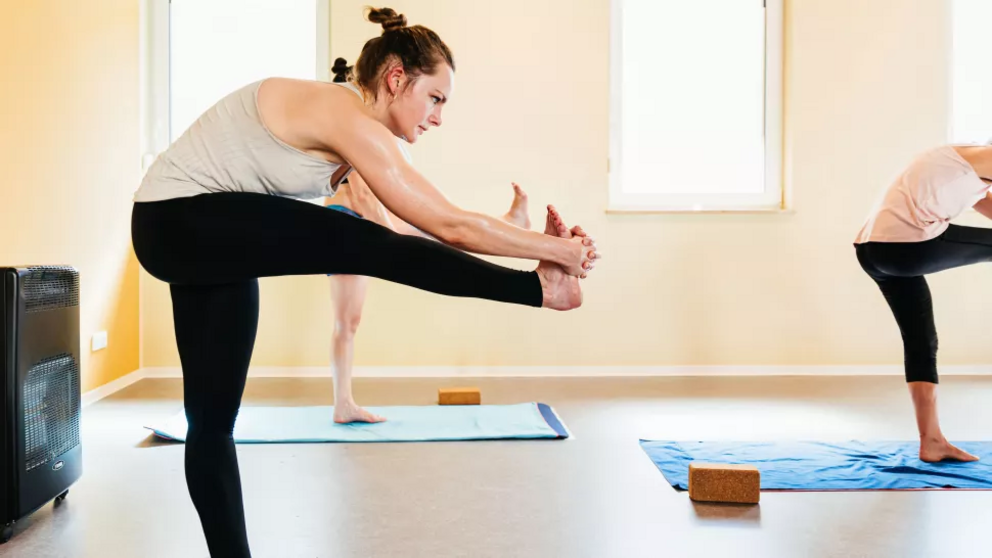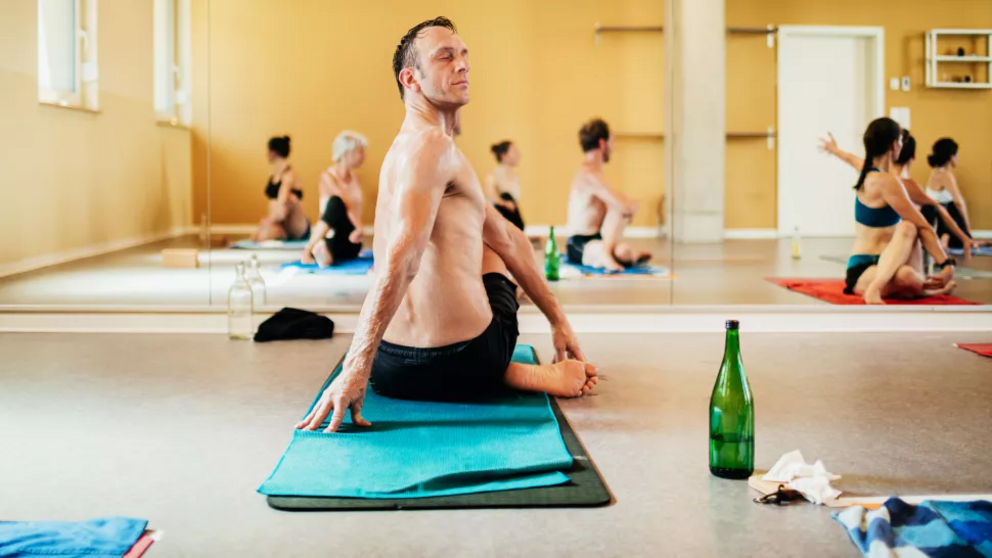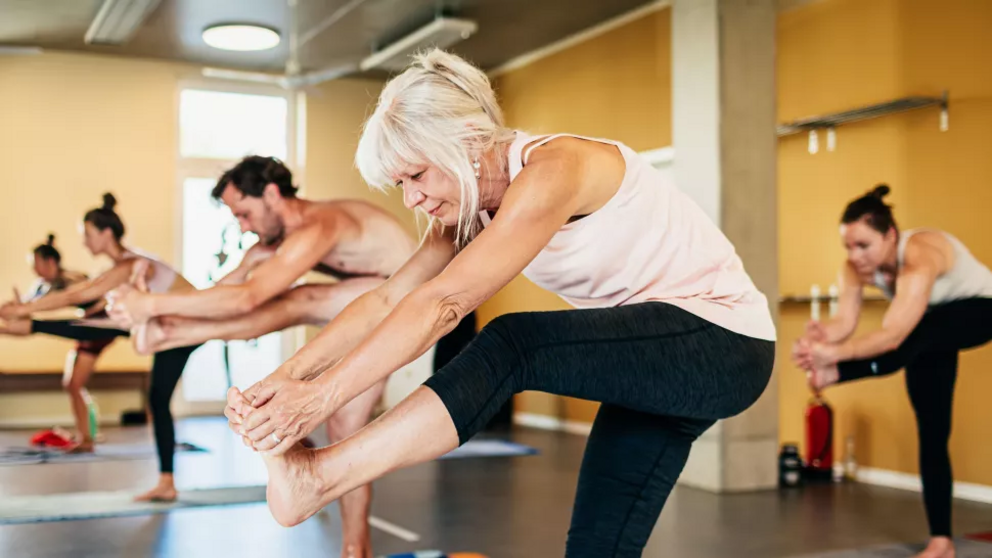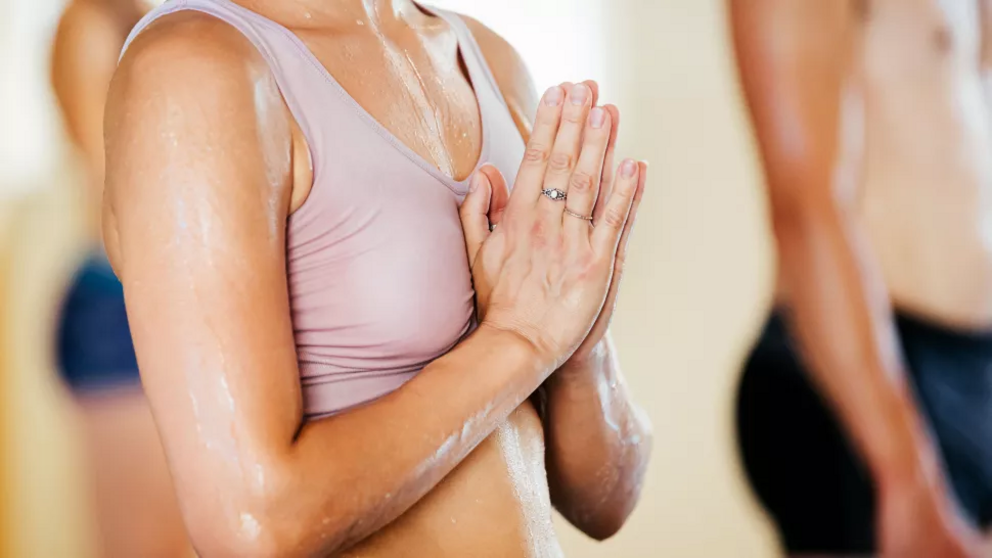Hot yoga benefits: here’s why the sweat could be worth it
Hot yoga benefits could mean more than just getting sweaty on your mat. Find out why
Anyone who’s witnessed sinewed yogis delicately gliding through a series of poses while coated in a light sheen of sweat might think hot yoga benefits are easy to come by. And if you’ve ever braved a hot yoga class, you’ll know just how challenging it is for your mind and body.
While there’s plenty of research available on the perceived benefits of hot yoga, including improved strength, range of motion, and balance, a critical review published in the Evidence-Based Complementary and Alternative Medicine concludes there’s still a lack of robust evidence for some of the benefits.
We decided to comb through all of the latest research and speak to a practitioner to establish the real reasons you should be turning up the temperature in your next yoga session.
Hot yoga improves flexibility
Research, like this randomized controlled study published in the Journal of Strength and Conditioning, (opens in new tab) has found that hot yoga participants can experience increased shoulder, lower back, and hamstring flexibility after just eight weeks.
Other investigations – like this study by Physical Therapy in Sport (opens in new tab) – have shown that heat application to muscles can enhance the efficacy of stretching. The review also found a greater increase in range of motion when combining heat with stretching, rather than using heat alone, concluding that heat could provide added benefit on stretch-related gains of range of motion.
So you could find yourself touching your toes with ease if you regularly turn up to a humid yoga class – although more research is needed before we can call this a sure thing.

“Hot yoga carries all the regular benefits of yoga with a few added extras resulting from the heat, including an enhanced cardio challenge and increased flexibility,” says 350-hour qualified yoga teacher and hot yoga instructor, Eloise Skinner. “The heat enables your body to relax into postures and deepens your breathing and physical practice.”
Eloise Skinner
Qualified yoga teacher
Eloise Skinner is a qualified yoga, Pilates and mindfulness teacher. She currently holds classes at various studios across London. She's also an author and the founder of two educational start-ups.
Unbendy yogis rejoice – you don’t need to know how to be good at yoga (opens in new tab), either. Hot yin classes (where students sit and hold stretches for several minutes at a time) could be particularly beneficial, as the heat helps to release muscular tension and speeds up the relaxation of soft tissue; this improves flexibility and range of motion in your muscles, meaning you might find certain poses easier to reach than usual.
It can relieve stress
Feeling stressed? A daily yoga practice could just be your answer. There’s a wealth of research pointing to yoga as a stress-relieving practice, including a study published in the Journal of Science and Medicine in Sport (opens in new tab) that found that a 16-week program of hot yoga significantly reduced stress levels in sedentary and stressed adults.
Yoga uses gentle movement, mindfulness, and breathing techniques to switch on your parasympathetic nervous system. Our parasympathetic nervous system (opens in new tab), sometimes called the 'rest and repair' state, is crucial to combatting stress.

A systematic review from Frontiers in Human Neuroscience (opens in new tab) posited that deep, slow breathing could be linked with parasympathetic activity. As you're likely to be focusing on deep breathing during a hot and sweaty yoga session, you could experience an uptick in parasympathetic activity and a drop-off in stress.
To further illustrate the point, the American Psychological Society (opens in new tab) has published multiple independent studies that found hot yoga to be effective at reducing symptoms of depression and anxiety.
Better cardio workout and calorie burn
While yoga for digestion (opens in new tab) could soothe sore stomachs, another long-term benefit of hot yoga is a boost to your cardio credentials. Hot yoga ramps your heart rate up which could help you torch more calories during practice.
A study published in the Medicine & Science in Sport & Exercise Journal (opens in new tab) found that women burned an average of 333 calories, and men 378 calories, in a single 90-minute Bikram hot yoga session, which is a slower-paced heated class than styles like vinyasa. This was comparative to the equivalent of a 3.5mph brisk walk. A small study in the Journal of Physical Activity and Health (opens in new tab) found that a 60-minute vinyasa class burned slightly fewer calories than a brisk walk.
Exercise in the heat will burn more calories (opens in new tab), as your heart has to work harder to pump blood around your system and cool your body down. As such, a sweaty yoga session might take more out of you than a standard session.

Better sleep
According to the Sleep Foundation (opens in new tab), yoga and sleep go hand in hand because of the mindful nature of practice and the use of regulatory breathing techniques. The foundation even recommends practicing hot yoga several hours before bedtime to encourage you to drift off more peacefully at night. A National Health Interview Survey (NHIS) (opens in new tab) found that 94% of people use yoga for wellness reasons, 55% of yogis reported improved sleep, and over 85% reported a reduction in stress levels.
Stress and sleep have a very close relationship. High stress levels have been shown to directly correlate with lack of sleep, and lack of sleep has been linked to feeling irritable, anxious, sluggish, and stressed, the American Psychological Association (opens in new tab) reports. Yoga combines gentle movement, meditation, and breath to reduce stress and regulate the nervous system, helping to improve sleep.
Is hot yoga safe?
If practiced properly, hot yoga is absolutely safe. But there are a few conditions that prevent the practice, like high blood pressure, pregnancy, and joint conditions.
Due to the extra weight carried during pregnancy, as well as looser tendons and ligaments, there’s an increased risk of injury brought on by practicing in the heat. Prolonged heat exposure can also lower blood pressure which can make people feel dizzy or faint during practice. The clammy heat increases your flexibility too, which puts overzealous yogis at a greater risk of injury through overstretching; this means you could also be at risk if you’re hypermobile or pregnant.
Still keen to brave the heat?
According to a small study conducted by the American Heart Association (opens in new tab), the regular practice of hot yoga has shown to decrease blood pressure and stress levels in participants over a 12-week program, but if you’re already having issues with your blood pressure, it might be safer to practice in a non-heated environment or ask your doctor.
“If you feel light-headed during a class, you can take a recovery pose like a child's pose and drink lots of water,” advises Skinner. “Beginners should take their first couple of hot classes at a steady pace, remaining careful not to push beyond individual limits or risk injuries.”

